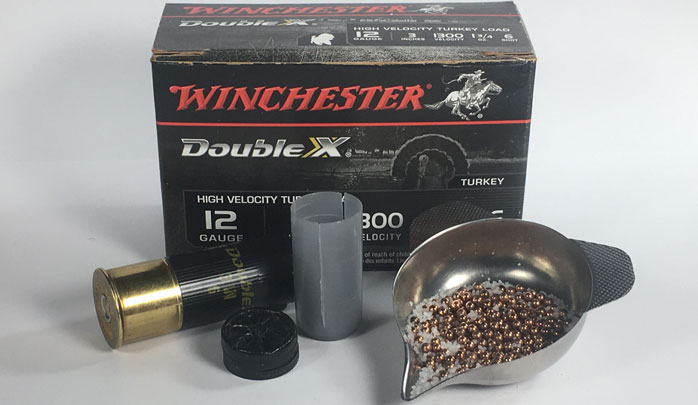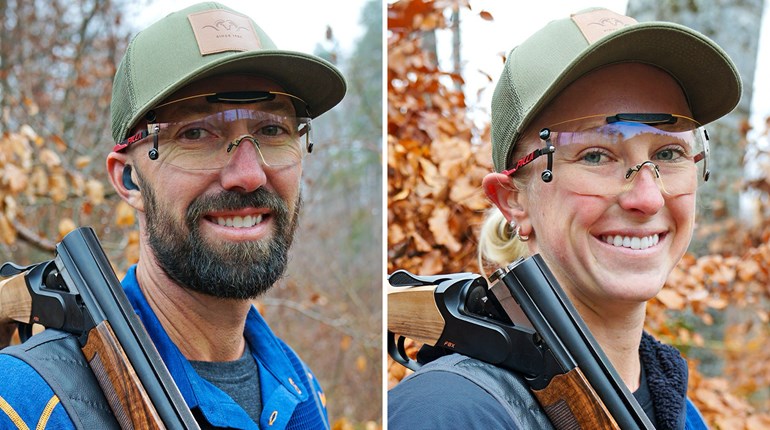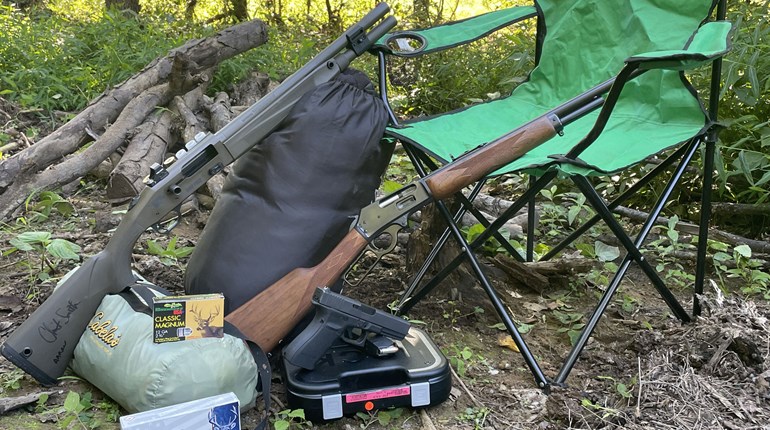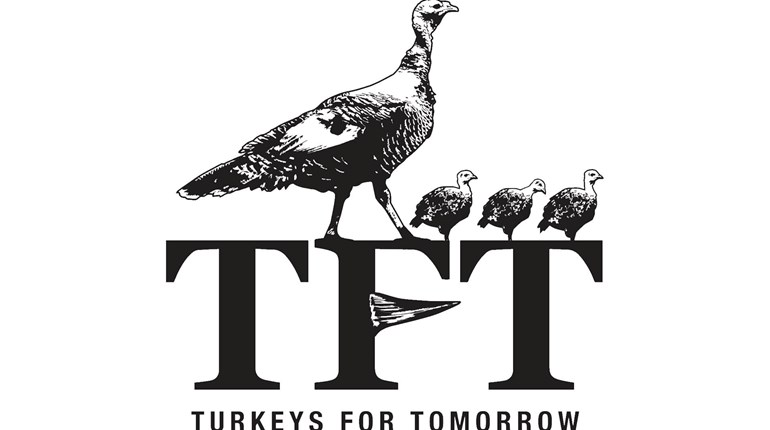
I’m guilty. Like many sportsmen, I value new firearms, ammunition, optics and gear—anything I perceive that’ll tip the odds in my favor or can increase my comfort or safety while afield. This certainly applies to turkey loads. Why?
Time in the woods is invaluable, and there’s never enough of it; therefore, I want to ensure I’m ready should an opportunity present itself. After all, you might only get a single shot—literally—all season. Prior to spring 2020, that “preparedness,” if you will, took the shape of shells chock full of tungsten-based shot. For nearly a half decade, I had relied on TSS, ITX Extreme-13, Hevi-13 and Heavyweight, among others, to bring longbeards to bag. I demanded the best, and it resulted in some spectacular kills—including two at distances I won’t mention here, because I had severely underestimated the ranges of the birds. Still, the TSS worked like magic.
But last year, I opted to return to my turkey-hunting roots and use traditional-type lead and hybrid turkey loads. I’m not sure why I did so, but I’m glad I did. Two-thirds of my son and I’s spring toms would fall to leaded loads, including an old timer that took three seasons for me to kill due to his wiliness, other hunters (i.e. pressure), and his penchant for the neighbor’s posted property. A remnant Federal Premium 12-gauge, 3-inch 3rd Degree—featuring a layered amalgamation of No. 6 FS lead, No. 5 copper-plated lead, and No. 7 Heavyweight—closed the deal. The use of lead shot also enabled me to remove the blinders to the true value of our oldest pellet-making material.

Modern Lead Turkey Loads
Thanks to innovative propulsion systems such as the Federal FliteControl Flex wad, and pellet-protecting measures, including Winchester’s Shot-Lok, lead-based loads are more effective than ever—especially when coupled with a premium, tuned turkey choke tube from Indian Creek, Jebs, Trulock, Pure Gold, etc. Hunters who experiment with various choke and shotshell combinations will be awed by the performance they’ll attain.
While most premium lead turkey loads feature copper- or nickel-plated shot, it’s not mandatory for success; as evidenced by Remington’s cost-conscious Nitro Turkey line, high-antimony lead shot is deadly without the upgrade. That being said, in additional to being harder, copper-plated pellets patterning better, according to the Ballistic Products, Inc. Advantages Manual, 6th Ed., “the copper plating penetrated game better [and] resists getting wadded up in feathers, thus increasing the odds of clean, one-shot kills.” Further, it states, “Penetration and energy transfer of nickel-plated shot is unequaled by any other type of shot, even copper-plated.” I concur.

Tungsten-based shot penetrate very deeply due to their small size (littler than lead of the same weight), high density (and thus weight), and extreme hardness (it doesn’t warp), but lead deformation increases the energy on-target. However, that same relative softness is a double-edged sword; distortion of shot during setback and while traversing the bore—especially when passing through the choke—results in flyers that migrate to the fringe of the pattern and away from the “killing” core. While these deviating pellets can oftentimes be a lifesaver when a shot is taken at spitting distance, they’re detrimental for a distant bird. Nonetheless, even with a modest setup (basic shotgun and a no-frills choke tube), most lead turkey loads can effectively down a gobbler to 35 yards—maybe further.
Besides terminal effectiveness, the best quality of traditional turkey shells is cost. When compared to those with tungsten-based shot, they’re a steal. Even now, when all ammunition is scarce, they can be had for around $1 to $2 per round. Compare that to tungsten, which I recently observed selling for upward of $12.60 per round. At realistic ranges, the economical option will fill tags just as easily and leave extra money for the “fixings.” Gravy anyone?
In the subsequent section, I detail five unyielding lead turkey loads to accompany you in the woods this spring. Several of them I’ve employed afield myself, and I’ve had positive results when testing the rest; therefore, I can wholeheartedly endorse them all.

1. Winchester Long Beard XR
There’s a reason this shell tops the list; simply put, it redefined the performance of lead turkey loads. For that reason, it’s the go-to for discerning hunters who want tungsten-like reach without taking out a second mortgage.
What distinguishes Long Beard XR from the field is the use of Shot-Lok Technology. Customary buffering—coupled with a well-designed wad—does a fair job of preserving shot roundness; however, it cannot compare to the protection afforded by Winchester’s atypical approach in Long Beard XR. The copper-plated pellets are totally encased in a hard resin that, upon firing, fractures to cushion them. Thanks to their roundness, Winchester alleges that twice the numbers of pellets will impact within a 10-inch circle at 60 yards. I cannot confirm that claim, but I can say that from my well-used Benelli Super Black Eagle II (SBE II) fitted with an Indian Creek Black Diamond Strike or Carlson’s Long Beard Turkey choke tube, it patterns extremely tight at distance—almost too densely. It has also accounted for about a half-dozen lovestruck Virginia gobblers for my son and I since it debuted. This includes a couple that were a few steps on the other side of 50 yards. Never have I been left wanting with Long Beard XR.

Winchester Long Beard XR is available in 12-gauge 2¾-inch, 3-inch and 3½-inch, as well as 20-gauge 3-inch. Velocity is dependent on the payload selected (“magnums” are slower but carry additional shot), and No. 4, 5 and 6 shot can be found in each offering besides 12-gauge 2¾-inch and 20-gauge 3-inch. MSRP: $20.99 per 10-rnd box; winchester.com.

2. Federal Premium Grand Slam
Federal has pared down its lead turkey loads considerably, but one of its best remains—Grand Slam. Like many of the company’s other turkey and waterfowl shotshells, the Grand Slam series utilizes the FliteControl Flex wad. An updated form of the game-changing FliteControl wad, this iteration can be fired through all turkey chokes—including the increasingly popular wad-stripping models. Like the original, the segmented base flares upon exiting the muzzle, slowing its advance for a clean release of the shot; the key difference is that the new variant only has slits in the body. The result is tight patterns through a wide range of choke types and constrictions.
However, that’s only the beginning of Grand Slam’s attributes; contained within that wad is copper-plated shot that’s buffered to retain its spherical shape—again, to enhance patterns. To prevent leakage of the buffer, the shot charge is topped with a clear overshot disk, which is then secured by a roll crimp. An imprinted ruler on the hull allows you to instantly measure the spur of that longbeard you just killed—nice, but not necessary.

I’ve never downed a bird with this particular offering, but I’ve patterned it enough to know it’s an impressive performer. Additionally, I’ve also been fortunate enough to take several gobblers with the predecessor to this load: Mag-Shok, loaded with the then-new FliteControl wad. Regardless of the configuration, they flat out hammered gobblers at any practical distance, and this one will too.
Grand Slam loads are offered in 10-gauge 3½-inch, 12-gauge 3-inch and 3½-inch, and 20-gauge 3-inch. Whereas the 3½-inch versions utilize 2 ounces of shot (only No. 4 in 10-gauge), the 12-gauge 3-inch propels 1¾ ounces of No. 4, 5 or 6 to 1200 fps. The 20-gauge features 1 5/16 ounces of No. 5 shot at 1185 fps. MSRP: $16.99-$27.99 per 10-rnd. box; federalpremium.com.

3. Remington Premier Magnum Turkey High Velocity
A complement to Remington’s popular Premier Magnum Turkey series, the High Velocity variant—like the abovementioned Winchester offering—marries special propellants and reduced loads to achieve 1300 fps. Concerning the cargo, the 12-gauge, 3-inch has 1¾ ounces of No. 4 or 5 copper-plated shot, while the 3½-inch iteration sends an additional ¼-ounce of pellets downrange. Note that the No. 6 shot size and the 20-gauge are unavailable. The shot is safeguarded by a one-piece Power-Piston wad with crush section and traditional-type buffering.

I’m a longtime fan of the elder Premier Magnum shells due to their reliability, dense patterns and terminal performance—all at an affordable price. Given that I, my friends and relatives have all felled multiple turkeys with the aged version, there’s no doubt that this one will drop some too. The faster form sacrifices little in the way of payload to add oomph on the receiving end. MSRP: $9.99-$12.99 per 5-rnd. box; remington.com.

4. Winchester Double-X High Velocity Turkey
Winchester’s stalwart Double-X High Velocity Turkey shells have several similarities with Long Beard XR. For example, the faster-than-normal loads—achieved through propellant blending and lighter payloads—employ desirable, copper-plated shot in a non-cushioned wad. However, the pellets are protected by old-school Grex buffering, not Shot-Lok. This configuration saves the consumer a couple dollars per box. From what I’ve observed through pattern testing, this is a solid choice for all but the longest shots, and it’s pure poison within 40 yards. When I’m “running and gunning” in the mountains with a lightweight 20-gauge, you’ll find one of these in the chamber.

As for specifics, the 12-gauge, 3-inch variant propels 1¾ ounces of No. 4, 5 or 6 shot to 1300 fps, while the 3½-inch offering attains the same speed with 2 ounces. There’s also a 20-gauge, 3-inch version featuring 1 5/16 ounces of No. 4 or 5 shot at 1200 fps. Ten-count boxes start at $12.99 (at midwayusa.com). MSRP: $10.99-$19.99 per 10-rnd. box; winchester.com.

5. Remington Nitro Turkey
Want a turkey shell that belies it price? Look no further than Remington’s thrifty Nitro Turkey. As a dedicated turkey load, this one is about as frill-free as it gets. But it works very well.
Contained within an all-in-one Power Piston wad is a hearty payload of non-plated, high-antimony shot. That’s right—it’s devoid of copper and nickel. Plating increases cost, so to reduce the price consumers pay, Remington opted for its ear-catching “Special Nitro Mag” extra-hard, high-antimony shot instead. The shot’s hardness, as well as the compression section of the wad and polymer buffering, reduce deformation for denser patterns.

Like Premier Magnum High Velocity, its “premium” counterpart, Nitro Turkey loads are speedy, and the company employs the same practices to achieve it—optimized propellants and pared-down payloads. That being said, the 12-gauge, 3-inch offering incorporates 1⅞ ounces of shot (at 1210 fps), and its longer sibling only has ⅛-ounce more (at 1300 fps). There’s also a 3-inch, 20-gauge version that pushed 1¼ ounces. of No. 5 shot to 1185 fps. Outside of 20-gauge, No. 4, 5 and 6 shot can be had.
Although I haven’t personally killed gobblers with Nitro Turkey shells, I have friends who have, and one that swears by them. Given the results of patterning, I see why; these loads easily deliver the goods out to 40 yards, and with a low cost to boot. MSRP: 10.99-$16.99 per 10-rnd. box; remington.com.

With gobbler season fast approaching, now is the time to find the right shell. As you’re searching, don’t rule out lead (unless regulations prevent its use). You might find, like me, that the dated metal still has a place in the spring woods.





































